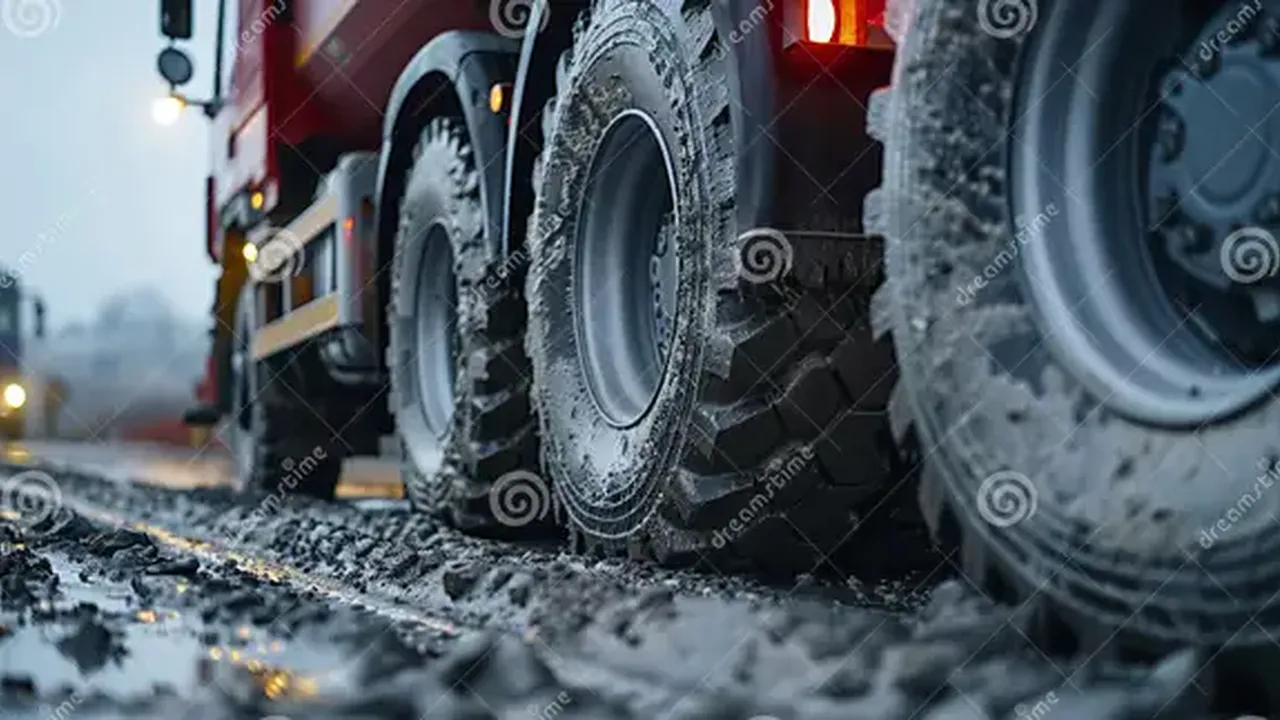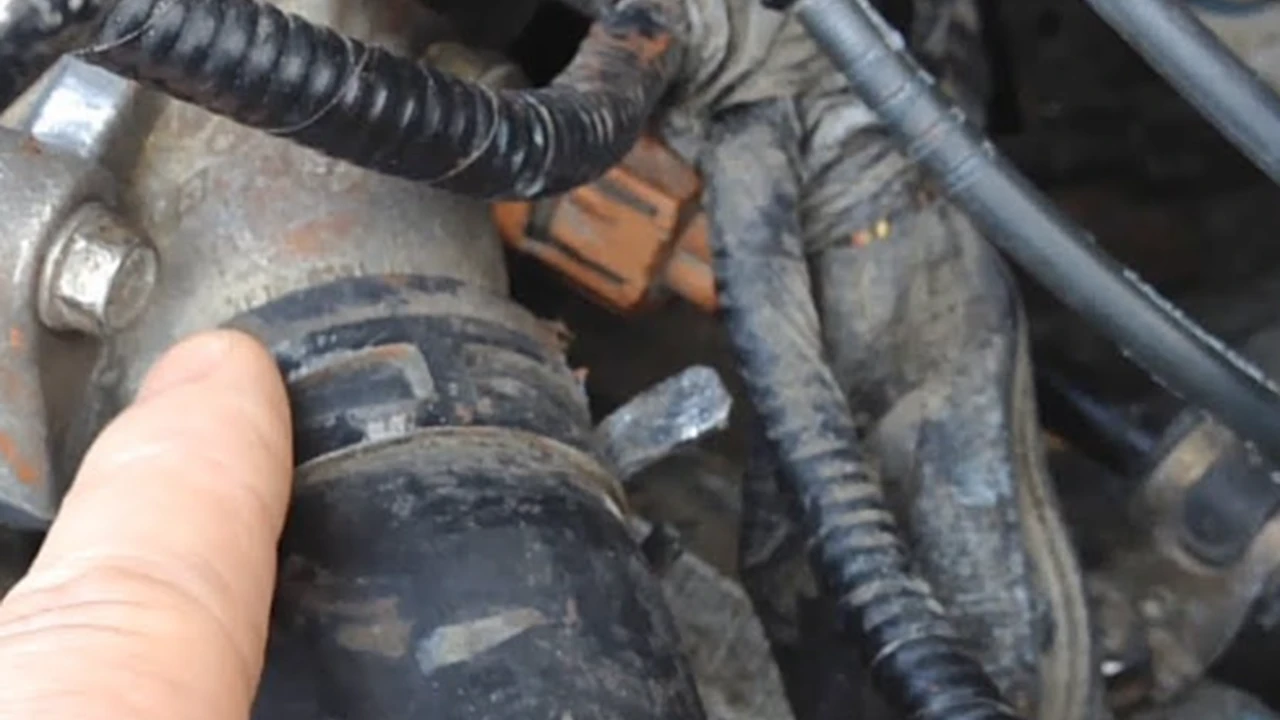Checking Tire Pressure: Improving Fuel Efficiency and Safety

Why Checking Tire Pressure Matters Fuel Efficiency Safety and Tire Longevity
Alright folks, let's talk tires. Yeah, I know, not exactly the most glamorous topic, but trust me, keeping an eye on your tire pressure is one of the easiest and cheapest ways to boost your fuel efficiency, stay safe on the road, and even extend the life of your tires. Think of it like this: your tires are the only thing connecting your car to the road. They're responsible for everything from braking and accelerating to handling curves. If they're not properly inflated, you're putting yourself at risk. Plus, you're throwing money away at the pump!
So, why is tire pressure so important? Well, for starters, underinflated tires have a larger contact patch with the road. This means more friction, which translates to more rolling resistance. More rolling resistance means your engine has to work harder to move the car, which then means you're burning more fuel. Think of it like trying to run in sand versus running on pavement. Same effort, but way less efficient in the sand, right? Properly inflated tires reduce that rolling resistance, saving you gas money.
And then there's the safety aspect. Underinflated tires can overheat and even blow out, especially on hot days or during long drives. A blowout at highway speed is a seriously scary situation and can easily lead to an accident. Proper inflation ensures that your tires are running at their optimal temperature and are less likely to fail.
Finally, properly inflated tires wear more evenly. Underinflation causes the edges of the tire to wear down faster than the center. Overinflation causes the center to wear down faster than the edges. By maintaining the correct pressure, you'll get the most miles out of your tires, saving you money in the long run.
How to Check Your Tire Pressure A Step-by-Step Guide for Optimal Tire Performance
Okay, so you're convinced. Checking your tire pressure is important. Great! Now, how do you actually do it? Don't worry, it's super simple. Here's a step-by-step guide:
- Gather your tools: You'll need a tire pressure gauge. You can find these at any auto parts store or even at most gas stations. There are two main types: digital and analog. Digital gauges are generally more accurate and easier to read, but they require batteries. Analog gauges are less expensive and don't require batteries, but they can be a little harder to read. We'll talk about some specific gauge recommendations later.
- Find your recommended tire pressure: This is usually located on a sticker on the driver's side doorjamb or in your owner's manual. It's important to note that this is the recommended pressure for your *tires*, not the maximum pressure listed on the tire sidewall. The number on the sidewall is the maximum pressure the tire can handle, not the optimal pressure for your vehicle.
- Check your tires when they're cold: Driving heats up your tires, which increases the air pressure inside. For an accurate reading, check your tires before you drive or at least three hours after driving.
- Remove the valve cap: Each tire has a valve stem with a cap on it. Unscrew the cap and set it aside in a safe place (you don't want to lose it!).
- Press the gauge onto the valve stem: Press the gauge firmly onto the valve stem until you hear a hissing sound stop. Make sure the gauge is making a good seal.
- Read the pressure: If you're using a digital gauge, the pressure will be displayed on the screen. If you're using an analog gauge, read the pressure from the scale.
- Adjust the pressure: If the pressure is too low, use an air compressor to add air until you reach the recommended pressure. Most gas stations have air compressors available for a small fee. If the pressure is too high, use the small pin on the back of the tire pressure gauge to release air until you reach the recommended pressure.
- Replace the valve cap: Once you've adjusted the pressure, screw the valve cap back on.
- Repeat for all tires: Don't forget to check the spare tire, too!
Choosing the Right Tire Pressure Gauge Digital vs Analog and Product Recommendations
So, you need a tire pressure gauge. But which one should you choose? As mentioned earlier, there are two main types: digital and analog. Let's break down the pros and cons of each:
- Digital Tire Pressure Gauges:
- Pros: Generally more accurate, easier to read (especially in low light), often include features like a backlight and automatic shut-off.
- Cons: More expensive, require batteries.
- Recommendations:
- Accutire MS-4021B Digital Tire Pressure Gauge: A popular and affordable option with a clear digital display and a wide pressure range. Around $15.
- Longacre 52000 Digital Tire Pressure Gauge: A higher-end option favored by racers and enthusiasts. Extremely accurate and durable. Around $80.
- Analog Tire Pressure Gauges:
- Pros: Less expensive, don't require batteries.
- Cons: Can be harder to read, potentially less accurate.
- Recommendations:
- JACO ElitePro Tire Pressure Gauge: A well-regarded analog gauge with a large, easy-to-read dial and a rugged design. Around $20.
- Milton S-921 Pencil Tire Gauge: A classic and inexpensive option. Simple and reliable, but can be difficult to read precisely. Around $5.
Which one is right for you? If you value accuracy and ease of use, a digital gauge is the way to go. If you're on a budget or prefer a simple, no-frills option, an analog gauge will do the trick. Just make sure to choose a gauge that's well-reviewed and has a pressure range that matches your vehicle's needs.
Air Compressors for Tire Inflation Portable Options and Home Use Systems
Okay, you've got your tire pressure gauge. Now you need a way to inflate your tires! Unless you want to drive to the gas station every time your tires are low, you'll need an air compressor. There are two main types of air compressors for tire inflation: portable and home use systems.
- Portable Air Compressors:
- Pros: Compact, easy to store in your car, powered by your car's cigarette lighter or battery.
- Cons: Can be slow to inflate tires, may not be powerful enough for larger tires.
- Recommendations:
- EPAuto 12V DC Portable Air Compressor Pump: A popular and affordable option that plugs into your car's cigarette lighter. Features a digital display and automatic shut-off. Around $30.
- Viair 88P Portable Air Compressor: A more powerful portable compressor that connects directly to your car's battery. Ideal for larger tires and off-road vehicles. Around $70.
- Usage Scenarios:
- Roadside emergencies: A portable compressor is essential for inflating a flat tire on the side of the road.
- Maintaining tire pressure on the go: Easily top off your tires before a long trip.
- Inflating bicycle tires and sports equipment: Many portable compressors come with adapters for inflating other items.
- Home Use Air Compressors:
- Pros: More powerful, faster inflation, can be used for a variety of tasks (e.g., powering air tools).
- Cons: Larger, require a power outlet, more expensive.
- Recommendations:
- California Air Tools 8010 Steel Tank Air Compressor: A quiet and powerful oil-free air compressor that's ideal for home use. Around $200.
- Porter-Cable C2002 Oil-Free UMC Pancake Compressor: A popular and affordable pancake-style compressor that's easy to store. Around $100.
- Usage Scenarios:
- Inflating tires at home: Conveniently inflate your tires in your garage or driveway.
- Powering air tools: Use it for tasks like painting, nailing, and sanding.
- General household tasks: Inflate air mattresses, pool toys, and other inflatable items.
Tire Pressure Monitoring Systems (TPMS) An Overview and Benefits for Enhanced Safety
Let's talk about Tire Pressure Monitoring Systems, or TPMS. Many newer cars come equipped with TPMS, which automatically monitors your tire pressure and alerts you if it drops below a certain level. There are two main types of TPMS: direct and indirect.
- Direct TPMS: Uses sensors inside each tire to directly measure the pressure. These sensors transmit the pressure readings to the car's computer, which displays the information on the dashboard.
- Indirect TPMS: Uses the car's anti-lock braking system (ABS) sensors to detect changes in tire rotation speed. A tire with low pressure will have a slightly smaller diameter, which will cause it to rotate slightly faster than the other tires. The system uses this information to infer that a tire is low.
Benefits of TPMS:
- Increased safety: TPMS alerts you to low tire pressure, which can help prevent blowouts and accidents.
- Improved fuel efficiency: TPMS helps you maintain proper tire pressure, which can save you money on gas.
- Extended tire life: TPMS helps you avoid uneven tire wear, which can extend the life of your tires.
If your car doesn't have TPMS, you can purchase aftermarket systems. These systems typically consist of sensors that attach to the valve stems and a display unit that plugs into your car's cigarette lighter.
Nitrogen vs Compressed Air for Tire Inflation Is Nitrogen Worth the Cost
You might have heard about inflating your tires with nitrogen instead of compressed air. Nitrogen is an inert gas that's less susceptible to temperature changes and leaks out of tires more slowly than compressed air. Some argue that nitrogen inflation can improve fuel efficiency and extend tire life.
Benefits of Nitrogen Inflation (Claims):
- More stable tire pressure: Nitrogen is less affected by temperature changes, so your tire pressure will remain more consistent.
- Slower pressure loss: Nitrogen molecules are larger than air molecules, so they leak out of tires more slowly.
- Reduced tire corrosion: Nitrogen is a dry gas, which can help prevent corrosion of the tire's inner lining.
The Reality:
While nitrogen inflation does offer some theoretical benefits, the practical difference between nitrogen and compressed air is often minimal for everyday driving. Compressed air is already about 78% nitrogen, so the additional nitrogen doesn't make a huge difference. The biggest benefit of nitrogen is that it's usually dry, while compressed air can contain moisture, which can affect tire pressure and potentially corrode the wheels over a very long period of time. However, for most drivers, the cost of nitrogen inflation is not worth the slight benefits.
The Verdict:
Unless you're a serious racer or drive in extreme conditions, compressed air is perfectly fine for inflating your tires. Just make sure to check your tire pressure regularly and adjust it as needed.
Tire Pressure and Seasonal Changes Adjusting for Temperature Fluctuations
Speaking of temperature, it's important to remember that tire pressure changes with the seasons. As the temperature drops, your tire pressure will decrease, and as the temperature rises, your tire pressure will increase. For every 10 degrees Fahrenheit change in temperature, your tire pressure will change by about 1 PSI (pound per square inch).
Tips for Adjusting Tire Pressure Seasonally:
- Check your tire pressure more frequently during seasonal changes: Pay close attention to your tire pressure in the spring and fall, when temperatures can fluctuate dramatically.
- Adjust your tire pressure accordingly: If the temperature has dropped significantly, you'll need to add air to your tires to maintain the recommended pressure. If the temperature has risen significantly, you may need to release some air from your tires.
- Consider using a TPMS: A TPMS can help you monitor your tire pressure and alert you to changes caused by temperature fluctuations.
Beyond the Basics Understanding Tire Load Ratings and Speed Ratings
We've covered the basics of tire pressure, but there's more to learn about tires. Two important factors to consider when choosing tires are load ratings and speed ratings.
- Load Rating: The load rating indicates the maximum weight that a tire can carry when properly inflated. It's represented by a number on the tire sidewall. Make sure to choose tires with a load rating that meets or exceeds the requirements of your vehicle. You can find the recommended load rating in your owner's manual.
- Speed Rating: The speed rating indicates the maximum speed that a tire can safely sustain for an extended period of time. It's represented by a letter on the tire sidewall. Make sure to choose tires with a speed rating that meets or exceeds the maximum speed that you're likely to drive. While exceeding is fine, never choose a tire with a lower speed rating than what's recommended for your vehicle.
The Importance of Regular Tire Inspections Beyond Pressure Checks
Checking your tire pressure is important, but it's also crucial to inspect your tires regularly for other signs of wear and damage. Here are some things to look for:
- Tread depth: Tread depth is the amount of rubber remaining on your tire. As your tires wear down, their tread depth decreases, which reduces their ability to grip the road, especially in wet or snowy conditions. You can check your tread depth using a tread depth gauge or by using the penny test (insert a penny into the tread with Lincoln's head facing down. If you can see the top of Lincoln's head, your tread is too low).
- Sidewall damage: Check your tire sidewalls for cuts, bulges, or cracks. These can indicate that the tire has been damaged and is at risk of failing.
- Uneven wear: Uneven wear can indicate that your tires are not properly aligned or balanced. If you notice uneven wear, have your tires inspected by a professional.
- Foreign objects: Check your tires for nails, screws, or other foreign objects that may be embedded in the tread. If you find a foreign object, have it removed by a professional.
Professional Tire Services When to Seek Expert Help
While many tire maintenance tasks can be performed at home, there are times when it's best to seek professional help. Here are some situations where you should consult a tire specialist:
- Tire repair: If your tire has been punctured or damaged, it's best to have it repaired by a professional. They can assess the damage and determine whether the tire can be safely repaired or needs to be replaced.
- Tire balancing: Tire balancing ensures that the weight of the tire is evenly distributed around the wheel. Unbalanced tires can cause vibrations and uneven wear.
- Tire alignment: Tire alignment ensures that your wheels are properly aligned with each other and with the vehicle. Misaligned wheels can cause uneven wear, poor handling, and reduced fuel efficiency.
- Tire rotation: Tire rotation involves moving the tires from one position on the vehicle to another. This helps to ensure that the tires wear evenly and last longer.
By following these tips and taking good care of your tires, you can improve your fuel efficiency, stay safe on the road, and extend the life of your tires. So, grab your tire pressure gauge and get checking! You'll be glad you did.
:max_bytes(150000):strip_icc()/277019-baked-pork-chops-with-cream-of-mushroom-soup-DDMFS-beauty-4x3-BG-7505-5762b731cf30447d9cbbbbbf387beafa.jpg)






